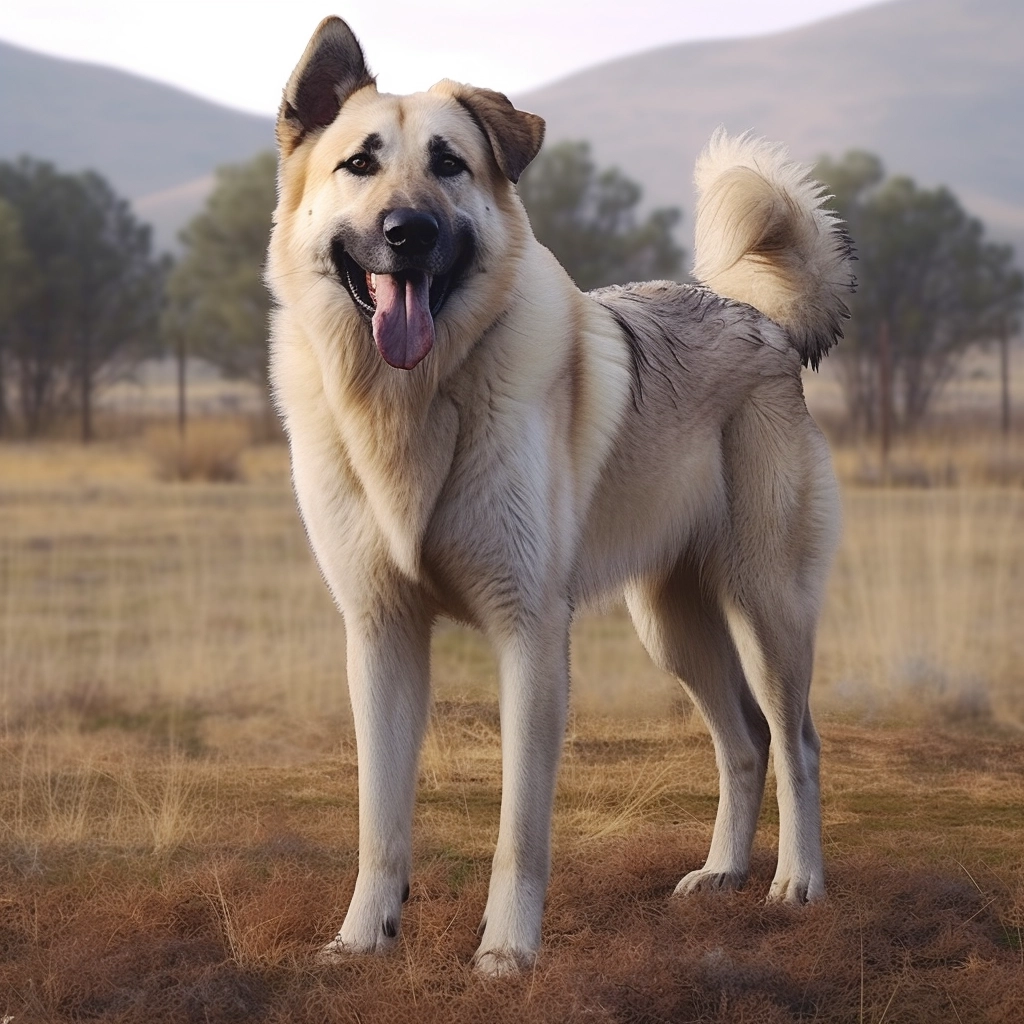Coyote vs. Kangal Shepherd Dog

Imagine a world where the animal kingdom settles its differences in a gladiatorial arena. In today’s face-off, we have the cunning Coyote going head-to-head with the mighty Kangal dog. Who will reign supreme? Let’s dive into this hypothetical clash of the titans!
Key Differences between Coyote and Kangal
The Coyote, a canine like the Kangal, known for its cunning and survival skills, roams the wild plains of North America. These creatures are adaptable, opportunistic, and skilled hunters. They are smart and persistent, but not too large.
On the other side, the Kangal, hailing from Turkey, is a powerful breed of guardian dog, renowned for its strength, loyalty, and protective instincts. Unlike the solitary Coyote, Kangals are used to working in packs or being part of a human ‘pack’. Kangals were bred especially to protect flocks of sheep and other grazing animals from wolves, so you know they are smart and tough.
Also known as the “Turkish Kangal Dog,” the Kangal is wily enough to protect flocks from cheetahs, which is an incredible feat for any dog breed. They have even been considered as protection against bears, though this would likely be more of a deterrent than an actual face-off, given the relative difference in size of a typical black, brown, or grizzly bear and the Kangal.
Statistical Comparison of Coyote vs. Kangal
| Attribute | Coyote | Kangal |
|---|---|---|
| Weight | 18-50 lbs (7-23 kg) | 110-145 lbs (50-66 kg) |
| Height | 21-24 inches (53-61 cm) | 28-34 inches (72-86 cm) |
| Speed | Up to 43 mph (69 km/h) | Up to 30 mph (48 km/h) |
| Bite Force | Approx 200-300 PSI | Approx 743 PSI |
Which Is Faster?
While the Kangal is no slouch, running as fast as 30 mph, the Coyote takes this round! With a top speed of 43 mph, it’s one of nature’s speedsters. Whether chasing prey or dodging danger, the Coyote’s swiftness is a sight to behold in our imaginary arena!

Which Is Bigger?
No question here, the Kangal towers over its competition. With its impressive stature and weight, the Kangal’s size is a natural advantage. It’s not just an intimidation factor; this bulk plays a significant role in a physical contest. The coyote, slender and more petite, just doesn’t match up in this round.
Which Is Tougher?
The Coyote is resilient, surviving across various habitats, facing threats, and enduring the challenges of the wild. However, when it comes to sheer physical toughness, the Kangal’s muscular build, incredible bite force, and protective nature make it a formidable opponent. In a head-to-head battle, the Kangal’s strength would be a significant factor.
Which Is Meaner?
“Mean” in the animal kingdom can be about aggression, territoriality, or survival instincts. Coyotes can be aggressive, especially when threatened, but they’re primarily survivors, not fighters. Kangals, bred to guard livestock, can exhibit fierce behavior, perceived as “mean” when they perceive a threat to their flock. So, in terms of sheer “mean” attitude in protective circumstances, the Kangal steals the show.
Who Would Win This Fight
With the crowd on the edge of their seats, this epic showdown would be a clash of speed, wits, and brute force. The Coyote, with its agility and cunning, might dodge and weave, but in a straight fight, it lacks the sheer physical prowess to overpower the Kangal.
The Kangal’s size, strength, and protective instincts make it a natural guardian and a formidable foe. So, in our fantastical arena, we’d have to give the victory laurel to the Kangal!
The only caveat to this decision is that the Coyote, while often seen alone, will form packs at times and can become somewhat formidable as a group. Loosely related (or even unrelated) individuals may form a hunting party in order to take down a larger animal, like an antelope or bighorn sheep (which can weigh up to 300 pounds).